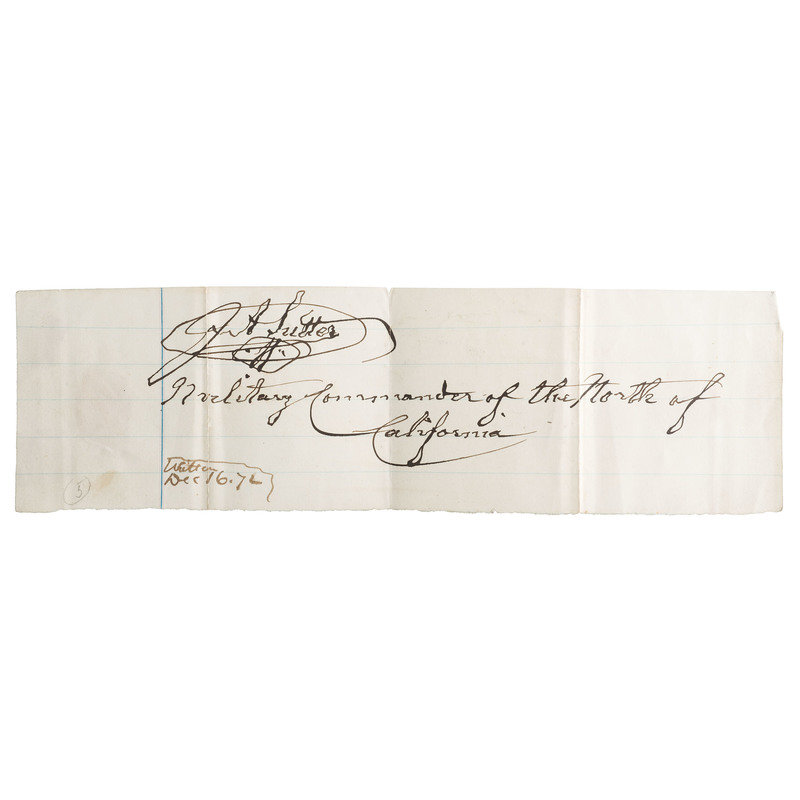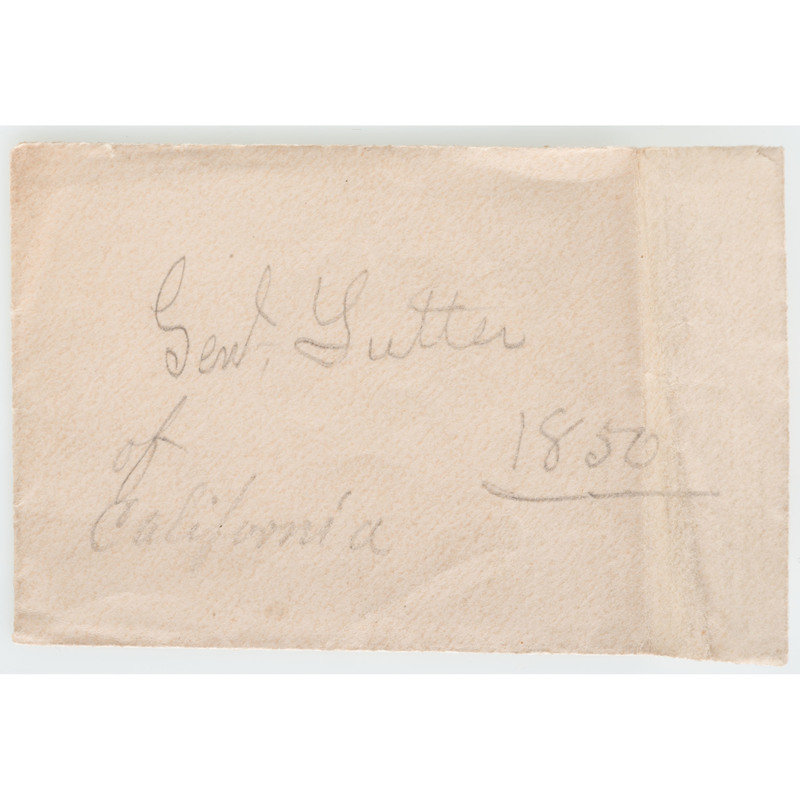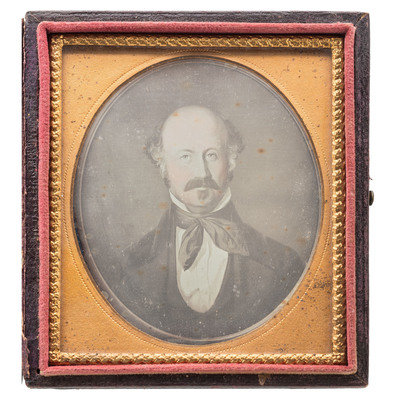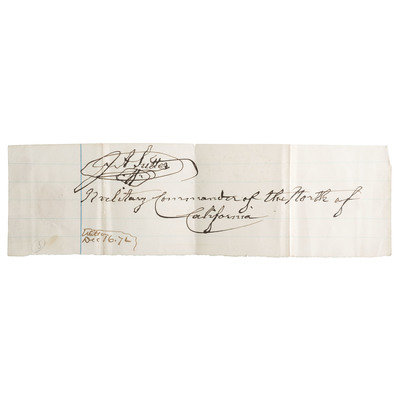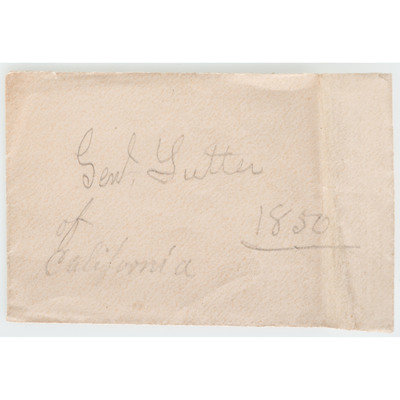Condition Report
Contact Information
Lot 305
Lot Description
Lot of 3, featuring sixth plate daguerreotype after painting of John Augustus Sutter (1803-1880), accompanied by envelope containing his signature. Daguerreotype presents a bust-length portrait of Sutter, clad in a dark suit coat and cravat; housed in full pressed paper case.
Exterior of envelope reads, "Genl. Sutter / of / California / 1850," with paper inside, 7.75 x 2.375 in., bearing Sutter's autograph, "J.A. Sutter / Military Commander of the North of California," dated in a different hand, "Dec 16. [18]72."
John Augustus Sutter, a German-born Swiss pioneer, immigrated to California when it was still part of Mexico and was eager to acquire land and establish frontier industries in North America. He became a Mexican citizen in 1840 so he would qualify for a land grant of 48,827 acres, which he named "New Helvetia" (New Switzerland). At the time, Sutter's Fort was the most prosperous European settlement in California, and a destination for many settlers, including the ill-fated Donner party. In 1847, Sutter endeavored to build a sawmill in Coloma, along the American River. The following year, once construction was underway, gold flecks appeared in the gravel. Though he tried to keep the discovery secret, Sutter's land soon grew overrun with prospectors, spurring the Gold Rush to California. More interested in farming and the construction of the mill, Sutter bought up as much land as he could in an attempt to dissuade the gold seekers, but they continued to arrive in throngs and destroyed nearly everything he had previously established.
This lot is located in Cincinnati.

